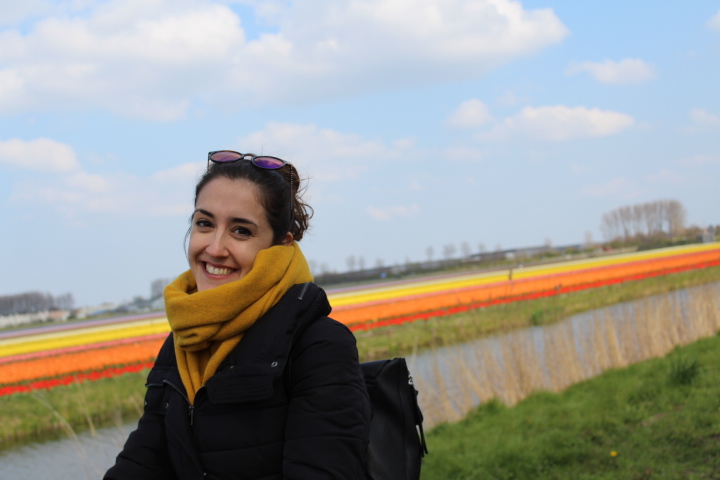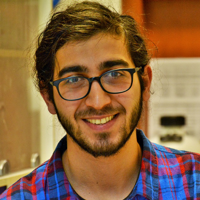Alumni
Ilze Adlere – ESR 1
Project: Small ligands to modulate CXCR4 and CXCR7 mono-, homo-, and heteromers
Results:
Quote:
Birgit Caspar – ESR 2
Project: Pepducins to modulate CXCR4 and CXCR7 mono-, homo-, and heteromers
Results: We understood the mechanism of pepducins better, extracellular vs intracellular, binding to mutants, functional similarities and differences to CXCL12
Quote: ‘ONCORNET has been a great opportunity to take a step into science with countless networking opportunities’

Vladimir Bobkov – ESR 3
Project: Nanobodies/antibodies to modulate and detect CXCR4 and CXCR7 mono-, homo-, and heteromers
Results:
Quote:
Angeliki Karatza – ESR 4
Project: Development of CXCR4 and CXCR7 specific chemokines and reagents
Results:
Quote:
Marta Arimont Segura – ESR 5
Project: In silico guided identification of molecular determinants for modulation of CXCR4 and CXCR7
Results: Compilation of experimentally-validated structural and ligand data on chemokine receptors in order to generate and support protein-ligand 3D models, including CXCR4-CXCL12, CXCR7-CXCL12, CXCR4 with in-house ligand series of novel antagonists, CXCR7 with in-house novel full agonist, CXCR4-nanobody models.
The models generated within this project have helped support experimental approaches, design new ones, as well as provide a structural explanation for the molecular and cellular effects associated to these experiments.
Additionally, these models provide a useful tool for running new virtual screening campaigns for the identification of novel chemokine receptor ligands.
Quote: ‘ONCORNET has been a life experience, the beginning of a very exciting adventure that’s just started. It has meant more than the beginning of a career, with a prestigious grant, a very good group and university, and an amazing network, but has also meant making friends, become an “expat”, and hence grow as an individual.’

Joyce Heuninck – ESR 6
Project: Functional properties of CXCR4 and CXCR7 homo- and heteromers
Results: CXCR4 and CXCR7 oligomers can be detected in transfected cells by TR-FRET between covalently labeled receptors and receptors labeled with fluorescent nanobodies using microscopy, assays in plate format and by ligand binding assays. In addition, we have been able to detect CXCR4 homomers using fluorescent nanobodies by TR-FRET in an endogenous setting.
Quote: ‘ONCORNET has been an extremely interesting scientific experience in which I have learned than I could even imagine, and in meantime I have met the nicest people and traveled to new places’

Cristina Perpina Viciano – ESR 7
Project: G protein-dependent signalling by CXCR4 and CXCR7
Results: FRET-based receptor sensors were successfully developed and characterized. They have been used to investigate CXCR4 and CXCR7 activation in response to different ligands. We investigated the dynamic and kinetic aspects of activation of CXCR4 and its early signaling steps in response to CXCL12 by using FRET-based approaches.
Quote: ‘Outstanding experience for the PhD: interdisciplinary science and collaborations, travelling and friends’

Maria Martins Neves – ESR 8
Project: Role of G protein-coupled receptor kinases (GRKs) in CXCR4 and CXCR7 signalling and modulation
Results: Our data suggest that in breast cancer, chemokine CXCR4 and CXCR7 receptors cooperate with growth factors, present in the tumor microenvironment, to foster oncogenic signaling. GRK2 was identified as a modulator of such crosstalk, in a cell type-dependent manner.
Quote: ‘ONCORNET program contributed greatly for my scientific growing, giving me a broad knowledge in different scientific areas, training in scientific writing, knowledge about different career options and improved significantly my ability to properly communicate science.’

Davide Capoferri – ESR 9
Project: Analysis of biased signalling responses through CXCR4 and CXCR7
Results:
Quote:
Aurelien Zarca – ESR 10
Projects: Differential phosphorylation of CXCR4 and CXCR7
Results: Characterization of a new scaffold structure of CXCR4 antagonist. Characterization of a new generation of nanobodies tagetting CXCR4 and CXCR7. Development of the first radiolabeled small molecule agonist of CXCR7. Determination of the binding mode of small molecule agonist GD301 targeting CXCR7. In-depth study of CXCR4 and CXCR7 phosphorylation profiles, kinases involved and functional consequences (internalization, signaling).
Quote: ‘A family of academic and industry top research scientists, which will last my entire career’

Ali Isibilir – ESR 11
Project: Localization and trafficking of CXCR4 and CXCR7
Results: CXCR4 membrane dynamics, monomer/oligomer stoichiometry has been resolved at different expression levels using high-resolution microscopy. Ligand-mediated modulation of CXCR4-CXCR4 interactions has been studied and suggested a distinct mechanism of action.
Quote: ‘ONCORNET helped me establish a close contact with the people in GPCR field, boosted my career and made me admire the importance of such collaborative work.’

Amos Fumagalli – ESR 12
Project: Functional proteomics of CXCR4 and CXCR7-associated signalling networks
Results: The interactomics of CXCR4 and ACKR3 have been deciphered using an AP-MS proteomics strategy. The functional consequence of the association between ACKR3 and a newly identified partner has been investigated opening new paradigms in ACKR3 signalization, which would help to shed new light on the pathophysiological role of the receptor.
Quote: ‘ONCORNET gave me the opportunity to do brilliant research in a very dynamic, multicultural, multidisciplinary, collaborative and stimulating environment.’

Carmen Callego – ESR 13
Project: Development of (patho)physiological in vitro and in vivo models to assess effect of CXCR4/CXCR7 modulators
Results: I have designed and generated of ACKR3-modified keratinocyte cell lines in order to construct 3D epithelial cell cultures (skin equivalents). I have studied how ACKR3 can impact HPV life cycle. Using state-of-the-art techniques such as transcriptomics or multiplex ELISA, I have provided new insights into the intrinsic response of keratinocytes to HPV infection. I have set up new protocols for murine skin cell isolation in order to characterize dendritic cell populations.
Quote: ‘At the end, you want to feel proud of your work.’

Joyce Koenen – ESR 14
Project: Genetic mouse models and in vivo studies
Results: tba
Quote: ‘To be part of the ONCORNET family was an amazing once-in-a-lifetime experience that gave us a lot of valuable insights, amazing opportunities and friends for life’

Sebastien Dekkers – ESR 15
Project: In situ analysis of CXCR4 and CXCR7 ligand-binding and spatio-temporal localization using imaging tools on ex vivo samples
Results: Overall project resulted in the succesful development of various fluorescent probes for the chemokine receptors CXCR4 and ACKR3. NanoBRET-based ligand binding experiments as well as competition binding experiments identified several probes with good affinity towards their respective targets. Functional experiments using the CXCR4-targeting probes further showed that the antagonistic nature of the parent compounds persists upon conjugating to a fluorophore. Lastly, live cell confocal microscopy showed excellent localization of the CXCR4 probes on the cell surface. ACKR3-targetting probes showed to localize neatly on sites with high expression of the receptor, resulting in the internalization of the receptor over time and indicating an agonist-like response. Ultimately, these probes have the potential to be used in various in vitro and ex vivo experiments, and can help further unravel how these receptors are involved in cancer.
Quote: ‘ONCORNET has provided a unique opportunity to collectively conduct high quality research. Working together on an international level with all other European ESRs has been an amazing experience.’
Follow us on
Contact details
Please contact us at:
e.v.langemeijer@vu.nl
ONCORNET Coordinator
Vrije Universiteit Amsterdam




